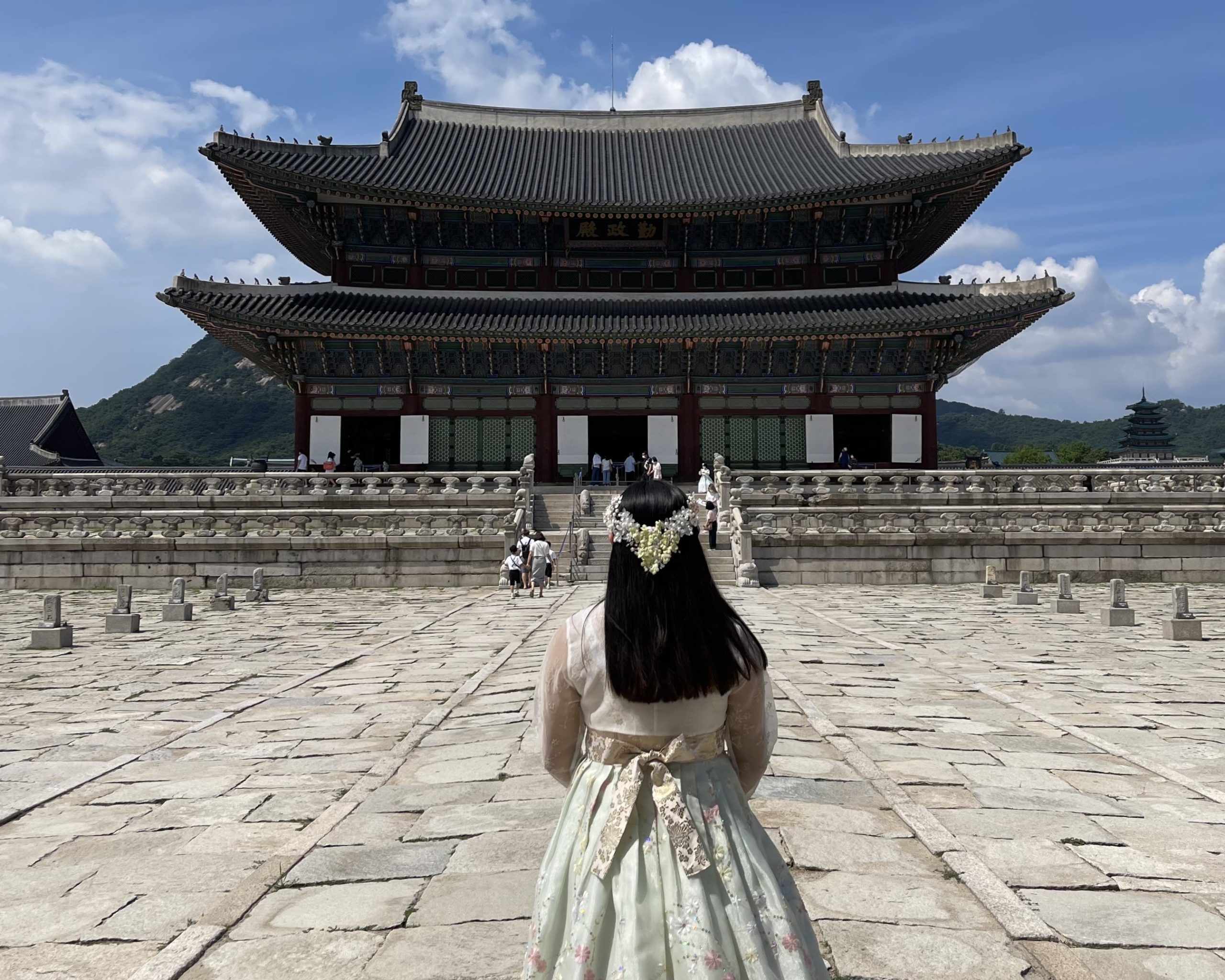
When Past Meets Present
For most of its history, Korea functioned as a kingdom. During the Joseon dynasty—Korea’s last and longest-lasting dynasty—the king presided at Gyeongbokgung Palace, in what is now the Jongno District in northern Seoul. Thanks to my program provider, I was able to not only visit the palace but to visit the palace wearing traditional Korean attire known as “hanbok.” Entering the gates wearing the beautiful dress I felt as if I had time traveled a few centuries into the past, but looking at the skyscrapers surrounding the palace I knew we were still in the 21st century.
My day at the palace began at around 1pm, and the first task was to find our peer mentor (a current Yonsei University student) who was leading the tour. After meeting up with our mentor, she then led us to the hanbok rental shop where we got to choose our dresses. There were many beautiful colors, but as soon as I saw the light green dress with pink flowers, I knew that one was for me. After changing, we were asked to choose a hairstyle containing different hairpins, ribbons, or various ornament combinations. Needless to say, I left the rental shop feeling like a 19th century princess and I loved it.
Walking around the palace felt like a completely different world. There were soldiers marching at the entrance of the palace, the king’s throne was extravagant, and the queen had a beautiful garden. I was surprised by the size of the village because even though the king’s throne is towards the entrance, there is an entire village behind it. Our mentor pointed out that those higher in rank were easy to notice because their homes were typically more colorful (the king’s was the most colorful, of course) and those lower in rank had plain wood-colored homes.
The biggest shock, however, was standing near the king’s throne, turning around, and seeing large skyscrapers surrounding the palace. On one side you saw Korea’s longstanding history as a kingdom and all that it encompassed, but on the other side you saw Korea’s modern, globalized state. I had never witnessed such a contrast between past and present before, and I was absolutely fascinated. Our mentor emphasized that while South Korea is globalizing, preserving its past is just as important. She even mentioned that Korean nationals who are under 20 years old enter the palace for free as an incentive to get more young people interested in their history.
Even though I grew up in America with tons of knowledge about my Mexican heritage, I still lack knowledge about Mexican history. Coming to Gyeongbokgung Palace, however, reinvigorated my desire to learn about my history and to never lose sight of my beautiful culture. Although globalizing and becoming a leading economic power, South Korea—from what I have witnessed—continues to preserve its history, and it is something many of us can learn from and emulate in our own lives.

